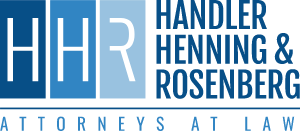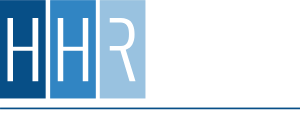The United States spends five trillion dollars on retail goods every year–over a quarter of the nation’s total Gross Domestic Product. More than a sixth of that is spent on non-food, non-vehicle consumer goods, the kind of products you’d buy at most big box retail stores like Target or Walmart. Billions of products fly off the shelves into people’s hand, everything from toasters and phones to toys and strollers.
However, we know that not all of those products are 100% safe. Categories like electronics, power tools, protective gear, and children’s toys have all included products that harmed or killed their users. In many of those cases, the product was defective; instead, the manufacturer was at fault due to poor design, materials, or advertising.
So with billions of items generating trillions of dollars, who’s keeping watch? Who makes sure that those products are designed well, manufactured safely, and good for public distribution?
And what’s their role when one of those products causes serious injury?
Who Is Responsible for Product Safety?
The short answer is the Consumer Product Safety Commission (CPSC), which is a federal agency committed to the regulation of non-vehicle and non-edible consumer goods. It’s among the smallest federal agencies in existence, with only 500 or so full-time employees (CPSC Strategic Plan). That means each employee is, on average, responsible for monitoring roughly $3.2 billion of commerce.
Because their workforce is so small, the CPSC relies on incident reports and consumer complaints to stay abreast of potentially dangerous products. Their investigations and inspections then inform whether a recall is necessary, at which point they’ll conduct a public campaign to warn buyers about potential hazards. However, those investigations must be limited to the worst public safety offenders, according to the CPSC’s own strategy documents.
What Products Are Regulated by the CPSC?
In general, the CPSC is only responsible for consumer products, i.e. not commercial equipment. Hazards found in commercial machinery falls under the Occupational Safety and Health Administration (OSHA), as they pertain to work accidents. However, there are some consumer products that the CPSC is not responsible for either.
The following items are regulated by the agency in parantheses:
- Aircraft (FAA)
- Cars, trucks, and related products (NHTSA)
- Cosmetics (FDA)
- Drugs (FDA)
- Food (FDA)
- Medical devices (FDA)
- Tobacco products (FDA)
- Pesticides and fungicides (EPA)
- Boats (Coast Guard)
However, outside this short list of items, almost everything you’d find at a retail store falls under Consumer Product Safety Commission regulations. If you were harmed by a fault ladder or poisoned by lead paint in a children’s toy, your incident report would go straight to the CPSC.
How Does the CPSC Enforce Safety Standards?
The CPSC enforces safety regulations through a combination of product testing requirements, industry oversight, and legal action when necessary. When it has identified a hazardous product, the agency has several enforcement tools at its disposal, including:
- Recalls: If a product poses a significant risk to consumers, the CPSC can work with manufacturers to issue a voluntary recall or, in extreme cases, mandate a recall.
- Civil Penalties: Companies that violate safety regulations or fail to report known hazards may face fines and legal action.
- Public Warnings: If immediate action is needed to protect consumers, the CPSC can issue safety alerts and advisories.
- Mandatory Standards & Bans: The agency can establish mandatory safety standards for certain high-risk products or ban particularly dangerous items altogether.
While these enforcement measures can help protect the public, they don’t provide relief for injured consumers. If a dangerous product caused you harm, taking legal action may be the best way to secure compensation for your injuries.
Does the Consumer Product Safety Commission Help Me If I’m Injured?
The CPSC’s job is to prevent accidents related to consumer products. Your incident report will help them determine if they should launch an investigation or institute a recall. However, what they won’t do is make sure you recover from your injuries. It’s possible that your individual accident, while the manufacturer’s fault, would not warrant an investigation or recall in the CPSC’s eyes. Your report would be filed, but you’d be left in the same position: injured without options.
Instead, you need to talk to Pennsylvania injury attorneys. At Handler, Henning & Rosenberg LLC, we’re especially familiar with the CPSC because our managing attorney, David Rosenberg, was an attorney for the agency before he was an injury lawyer. Today, he’s still holding manufacturers accountable, but now he does it on behalf of the injured rather than the United States government.
Call (888) 498-3023 for a free case consultation today! Learn your options and let us fight for what you need.


